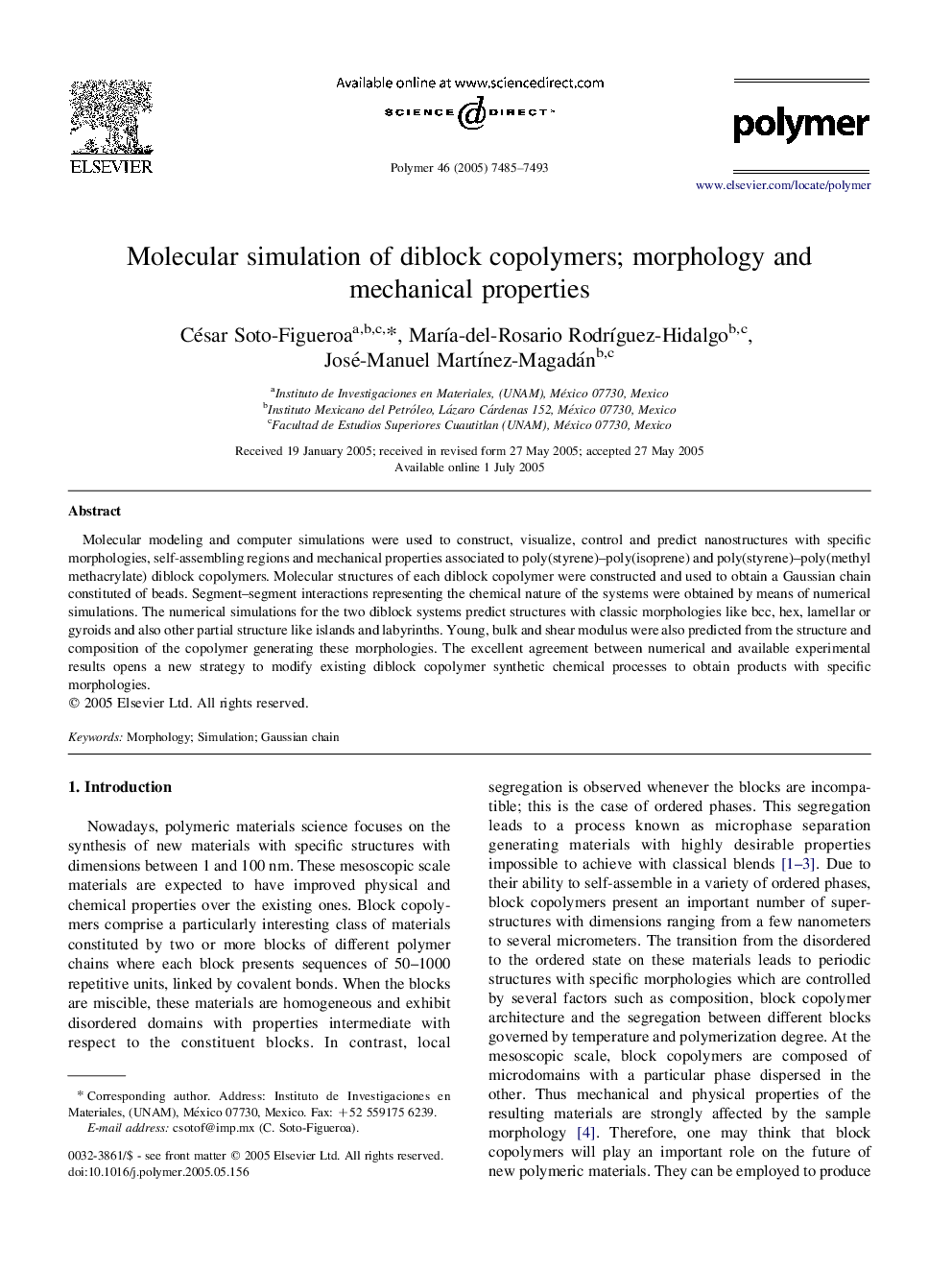| Article ID | Journal | Published Year | Pages | File Type |
|---|---|---|---|---|
| 5191244 | Polymer | 2005 | 9 Pages |
Abstract
Molecular modeling and computer simulations were used to construct, visualize, control and predict nanostructures with specific morphologies, self-assembling regions and mechanical properties associated to poly(styrene)-poly(isoprene) and poly(styrene)-poly(methyl methacrylate) diblock copolymers. Molecular structures of each diblock copolymer were constructed and used to obtain a Gaussian chain constituted of beads. Segment-segment interactions representing the chemical nature of the systems were obtained by means of numerical simulations. The numerical simulations for the two diblock systems predict structures with classic morphologies like bcc, hex, lamellar or gyroids and also other partial structure like islands and labyrinths. Young, bulk and shear modulus were also predicted from the structure and composition of the copolymer generating these morphologies. The excellent agreement between numerical and available experimental results opens a new strategy to modify existing diblock copolymer synthetic chemical processes to obtain products with specific morphologies.
Keywords
Related Topics
Physical Sciences and Engineering
Chemistry
Organic Chemistry
Authors
César Soto-Figueroa, MarÃa-del-Rosario RodrÃguez-Hidalgo, José-Manuel MartÃnez-Magadán,
